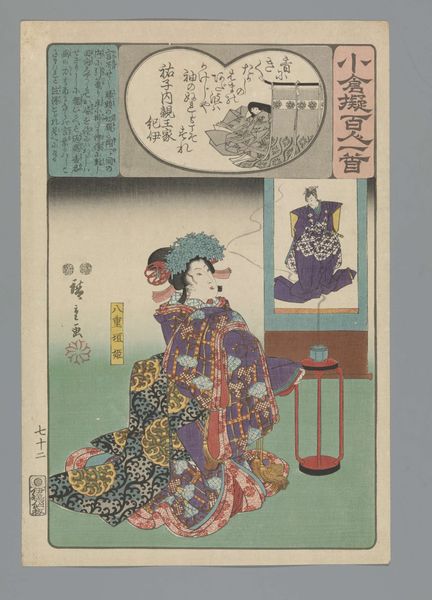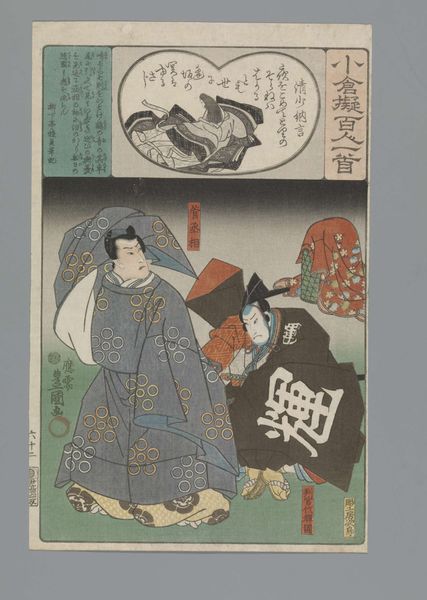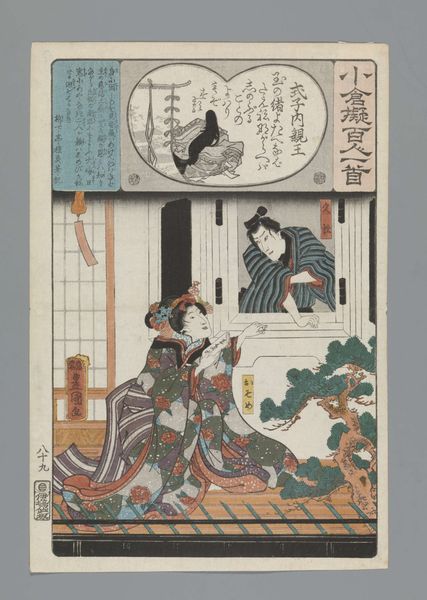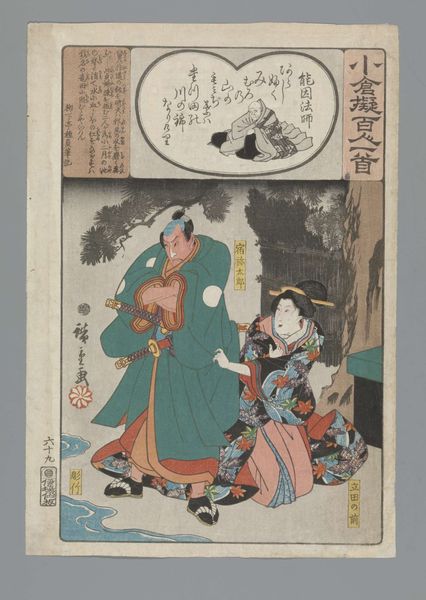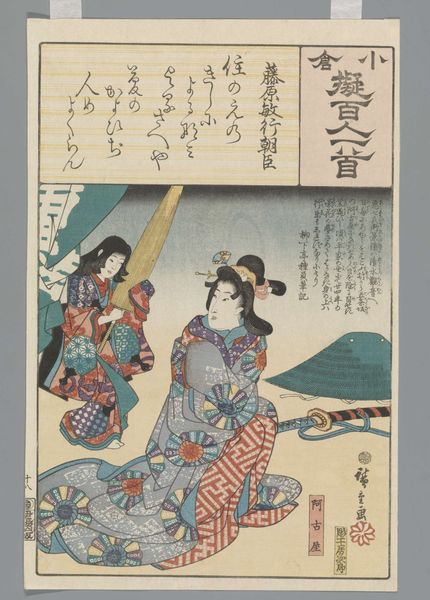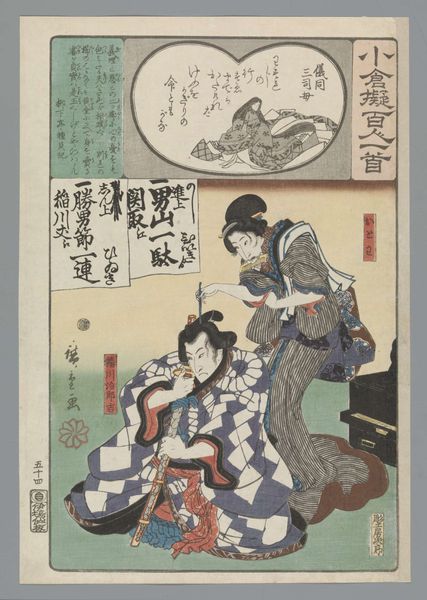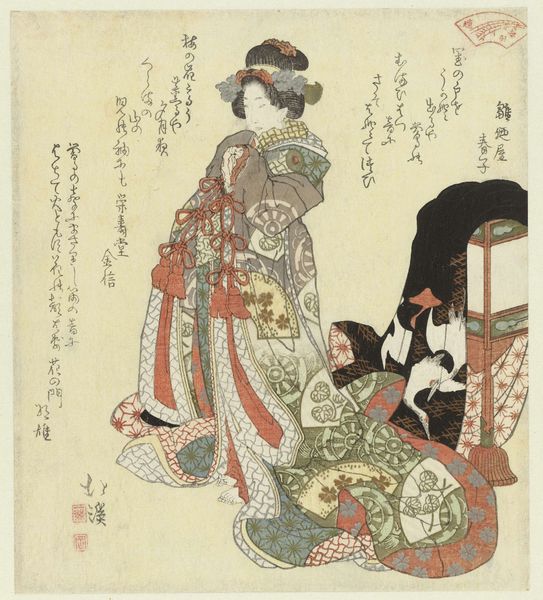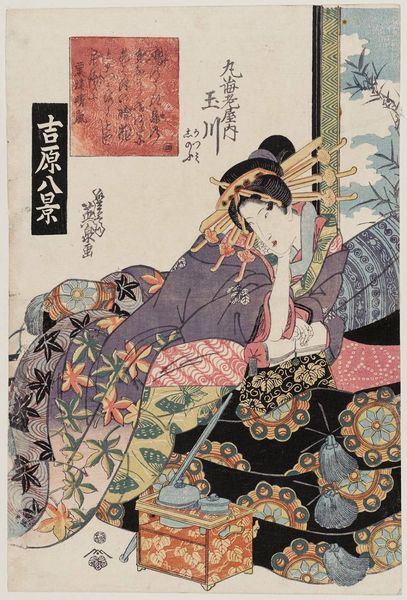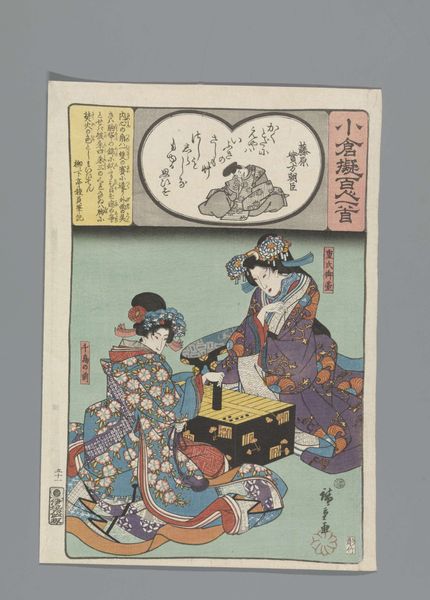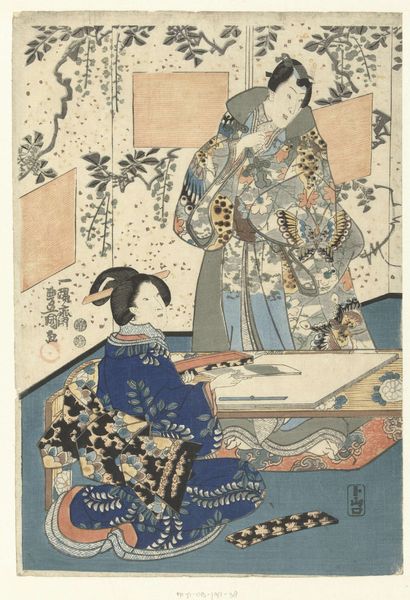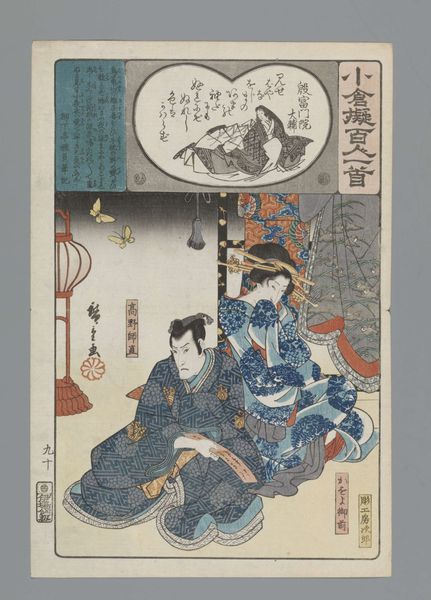![['Saki no Dai-Sojô Jien', 'Ogura Imitation of the One Hundred Poems'] by Utagawa Kunisada](/_next/image?url=https%3A%2F%2Fd2w8kbdekdi1gv.cloudfront.net%2FeyJidWNrZXQiOiAiYXJ0ZXJhLWltYWdlcy1idWNrZXQiLCAia2V5IjogImFydHdvcmtzL2EzZGEyNzIzLWRiMTAtNGIyZi1hNDIyLTIzZjEyNjBhZWIyNi9hM2RhMjcyMy1kYjEwLTRiMmYtYTQyMi0yM2YxMjYwYWViMjZfZnVsbC5qcGciLCAiZWRpdHMiOiB7InJlc2l6ZSI6IHsid2lkdGgiOiAxOTIwLCAiaGVpZ2h0IjogMTkyMCwgImZpdCI6ICJpbnNpZGUifX19&w=3840&q=75)
['Saki no Dai-Sojô Jien', 'Ogura Imitation of the One Hundred Poems'] 1846
0:00
0:00
utagawakunisada
Rijksmuseum
print, woodblock-print
#
narrative-art
# print
#
asian-art
#
ukiyo-e
#
figuration
#
woodblock-print
Dimensions: height mm, width mm
Copyright: Rijks Museum: Open Domain
This woodblock print, Ogura Imitation of the One Hundred Poems, was made by Utagawa Kunisada in Japan. Prints like these were not simply aesthetic objects, but commodities within a complex economic and social system. Here, Kunisada evokes the classical past through references to the Ogura Hyakunin Isshu, a famous anthology of one hundred poems. Yet, he does so by depicting actors in contemporary Kabuki roles. Look at the visual codes: the actors' elaborate costumes, stylized makeup, and dramatic poses. These are not direct representations of historical figures but rather, layered performances that reflect the cultural values and entertainment preferences of the Edo period. Kunisada was a star designer of Ukiyo-e prints in 19th century Japan. These prints played a crucial role in shaping urban culture and popular taste. They were produced by a complex division of labor, involving publishers, designers, woodblock carvers, and printers. Each print reflects social hierarchies and artistic conventions. Understanding prints such as this requires that the historian draws on a range of resources, from playbills and literary texts to economic surveys and workshop records.
Comments
No comments
Be the first to comment and join the conversation on the ultimate creative platform.
